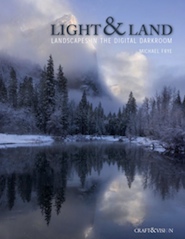
Edward Weston Darkroom. Carmel Highlands, California. September 28, 2014. © Copyright 2014 G Dan Mitchell – all rights reserved.
In late September I had the opportunity to join a group of photographers visiting the Wildcat Hill Weston home in the Carmel Highlands area of the California Coast. The Weston family, members of which still live and work here, trace their family history at this place back to the great photographer, Edward Weston. The main house is maintained in much the state it would have been in quite a while ago, and there are wonderful archival objects — photographs, art, objects, this darkroom, etc — everywhere. This small darkroom, designed for contact printing, is a small space off the main room of the building. Not only does it have fascinating historical interest for photographers, but it is also remarkable to see the modest and personal space in which so much Weston photography was realized.
 G Dan Mitchell is a California photographer and visual opportunist whose subjects include the Pacific coast, redwood forests, central California oak/grasslands, the Sierra Nevada, California deserts, urban landscapes, night photography, and more.
G Dan Mitchell is a California photographer and visual opportunist whose subjects include the Pacific coast, redwood forests, central California oak/grasslands, the Sierra Nevada, California deserts, urban landscapes, night photography, and more.
Blog | About | Flickr | Twitter | Facebook | Google+ | 500px.com | LinkedIn | Email
Text, photographs, and other media are © Copyright G Dan Mitchell (or others when indicated) and are not in the public domain and may not be used on websites, blogs, or in other media without advance permission from G Dan Mitchell.

